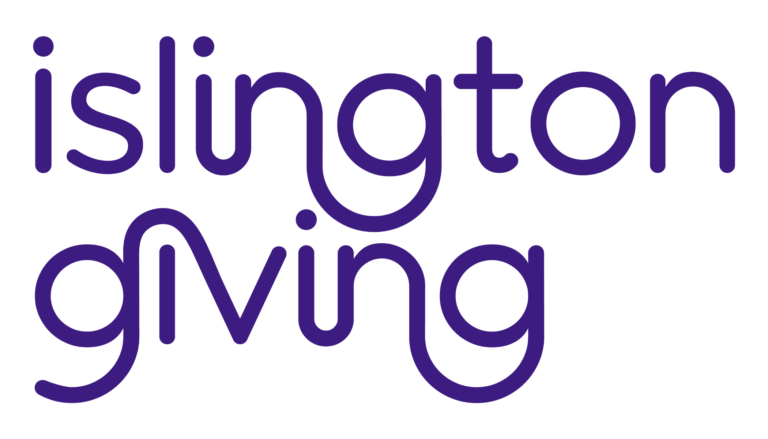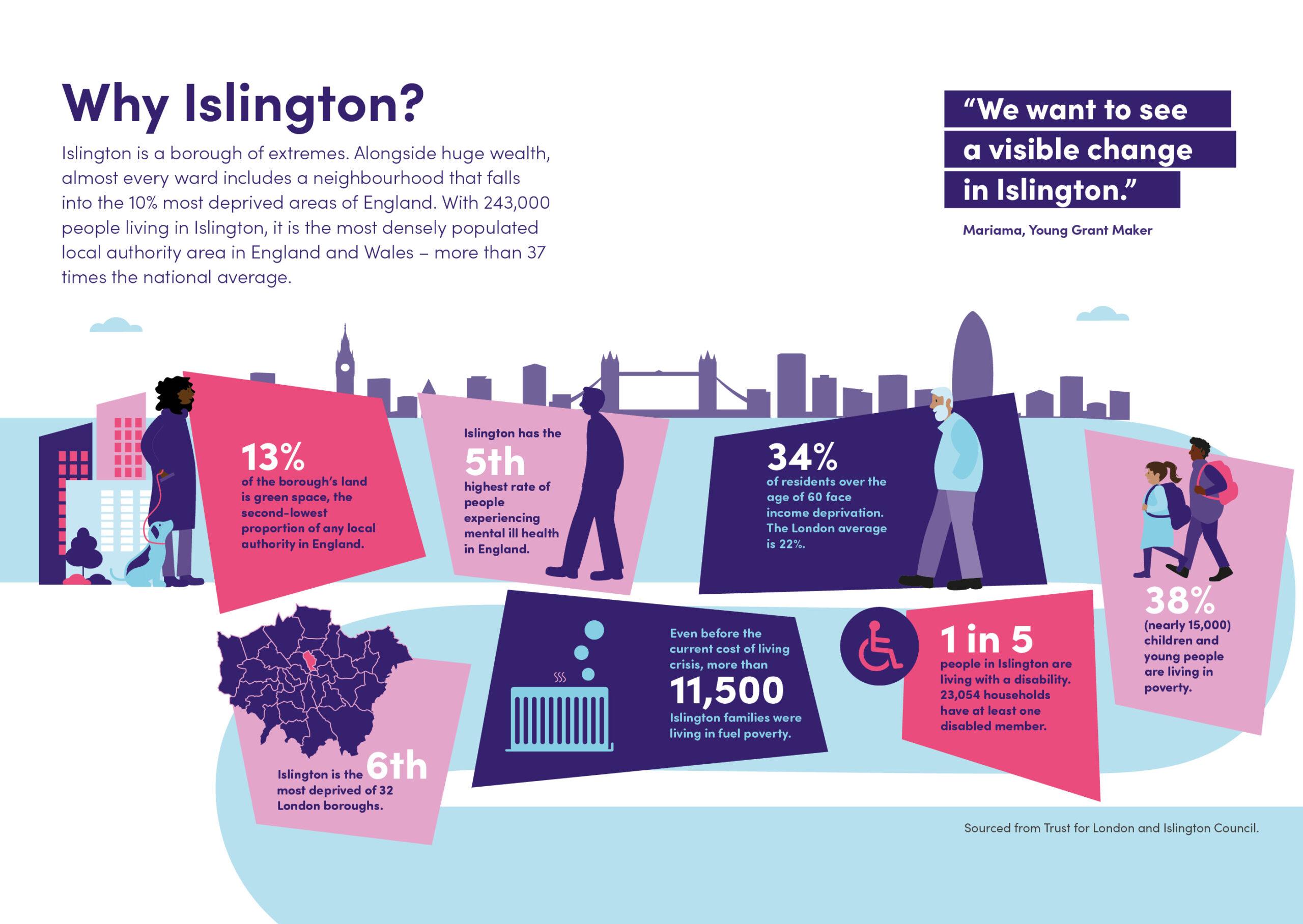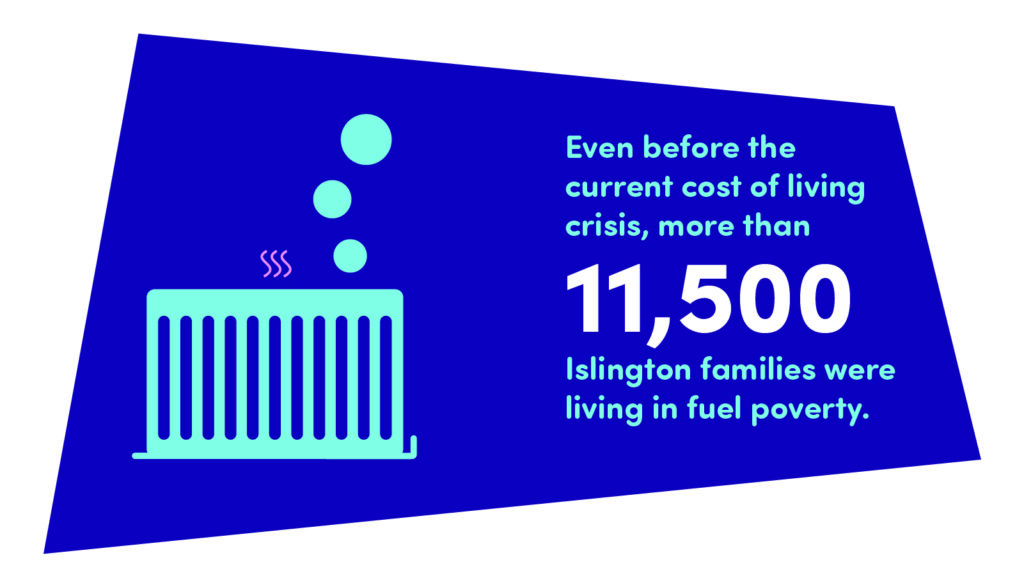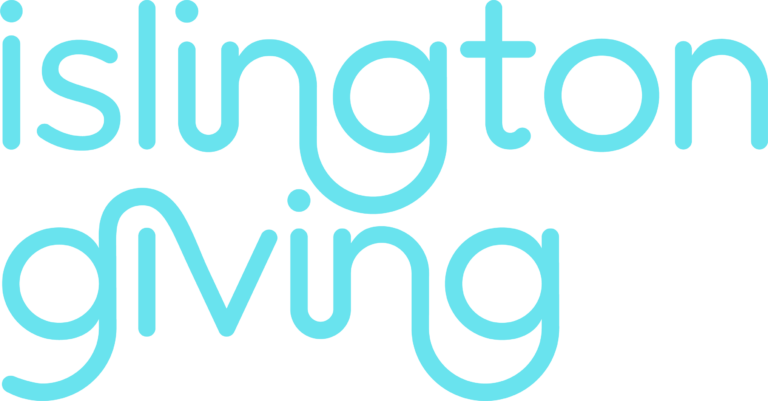Why Islington?
We live in an incredibly diverse borough that offers many opportunities. But Islington is also a borough of contrasts.
Islington is one of the most unequal places in the country.
We live in an incredibly diverse borough that offers many opportunities. But Islington is also a borough of contrasts. Almost every ward includes a neighbourhood that falls into the 10% most deprived areas of England.
Years of austerity, political uncertainty and welfare reform all compounded by the pandemic have put a huge strain on the sense of security and the mental well-being of many, but particularly people already living in hardship. Minority ethnic and other marginalised communities suffer added social inequalities caused by systemic discrimination.
We’re committed to work with these complexities to make Islington a fairer place for everybody to thrive.
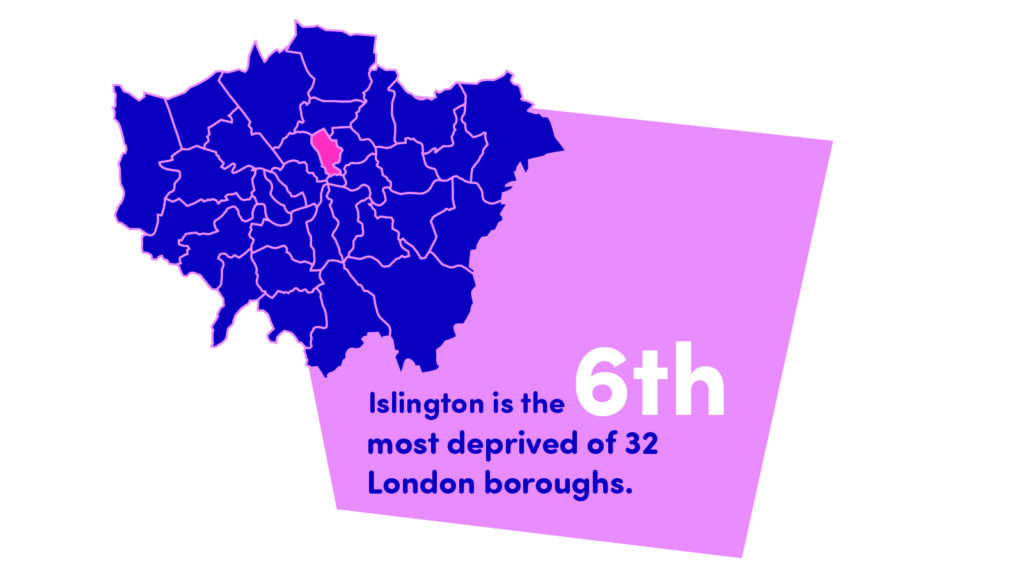
34% of Islington’s over-60 population live in income-deprived households, the fourth highest of all London boroughs.
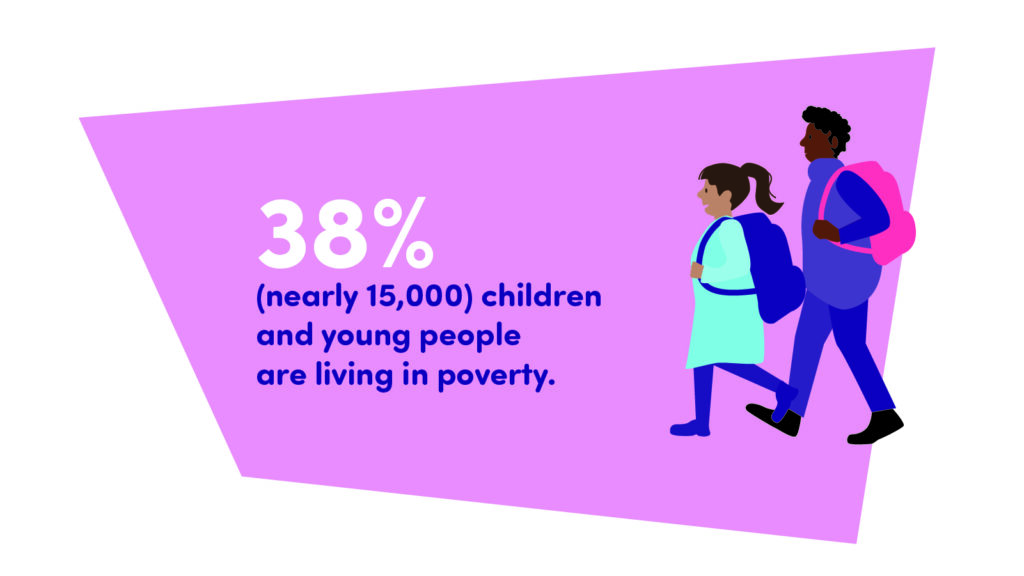
38% – nearly 15,000 – children and young people are living in poverty. Growing up in poverty can make children’s lives harder well into adulthood, reducing access to opportunities.
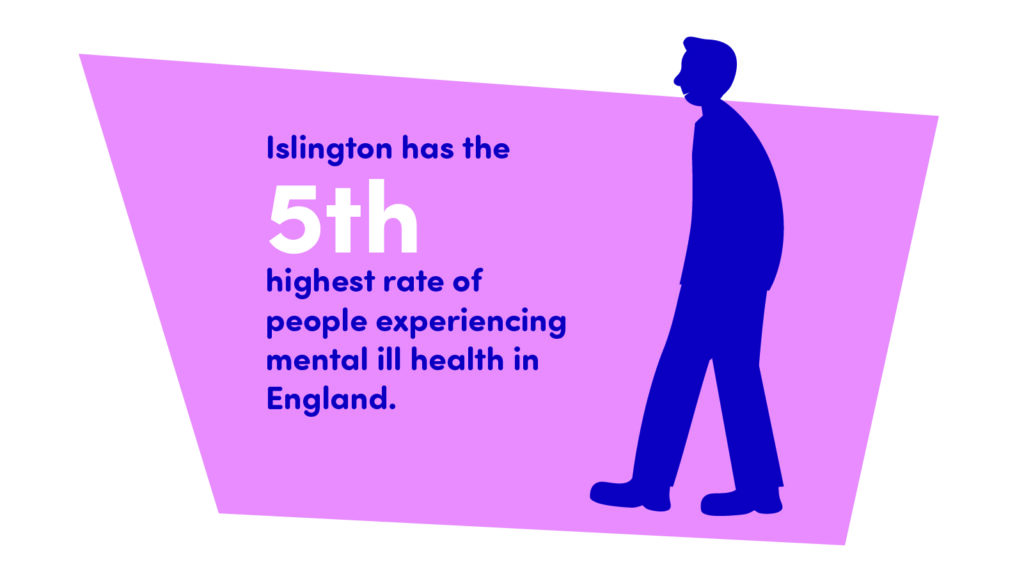
Islington has some of the highest levels of mental ill health in England, and the highest levels of depression in London.

1 in 5 people in Islington are living with a disability. 23,054 households have at least one disabled member. People with learning disabilities experience greater risk of poverty, unemployment and poor housing.
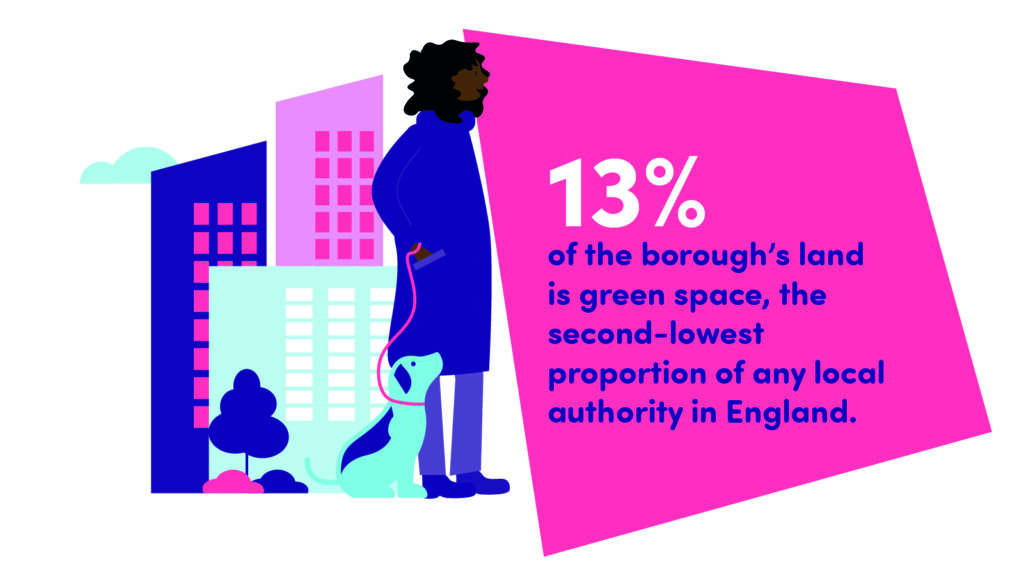
Only 13% of the borough’s land is green space, the second lowest proportion of any local authority in England.
Islington is one of the most unequal places in the country.
We live in an incredibly diverse borough that offers many opportunities. Diversity is one of the many reasons why Islington is such a great place to live and work. But Islington is also a borough of contrasts: years of austerity, political uncertainty, welfare reform all compounded by the pandemic have put a huge strain on the sense of security and the mental well-being of many, but particularly people already living in hardship. Furthermore, minority ethnic and other marginalised communities suffer added social inequalities caused by systemic discrimination.
We’re committed to work with these complexities to make Islington a fairer place for everybody to thrive.

Social isolation
34% of Islington’s over-60 population live in income-deprived households, the fourth highest of all London boroughs. Poverty and low income have both been found to increase the risk of loneliness and social isolation. Many of our older neighbours experience high levels of loneliness and isolation. Feelings of loneliness can threaten long-term physical and mental health.
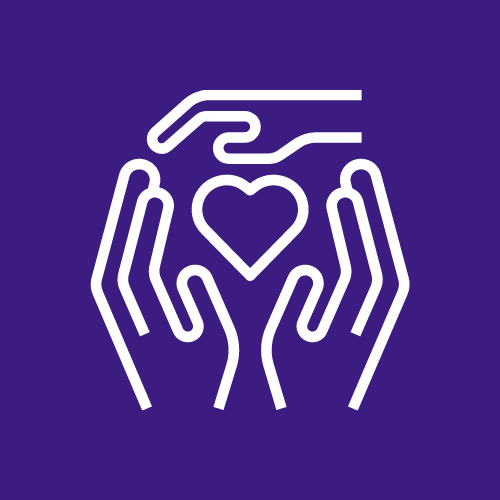
Children and Young People
Over 40% of primary school children in Islington live in poverty, the third highest rate in London. Growing up in poverty can make children’s lives harder well into adulthood, reducing access to opportunities. Moreover, children growing in minority ethnic households in Islington are more likely to be living in poverty in comparison to white children. We are determined to make a positive difference to the opportunities available for the thousands of children and young people in our borough who are affected by poverty.
What’s more, our young people’s lives have been negatively impacted by the pandemic, leading to increased mental health concerns and disrupted education. Youth unemployment has hit London hardest with the worst affected sectors like hospitality and retail claiming the heaviest toll.

Families
Islington is the most deprived borough in London for income deprivation affecting children. Child poverty is closely linked to parents’ / carers’ unemployment – approximately 18% of Islington children under 16 live in households with relative low income and 14% in absolute low income.
19% of Islington school pupils have some form of Special Educational Needs. This compares to
15% across London and England. Without access to services and social networks children have been at risk of falling behind and losing crucial years of development, particularly for very young children and for those with special educational needs, or behavioural difficulties.
93% of lone parents with dependent children are women. And because being a lone parent increases the likelihood of unemployment, household income is often lower than average for lone parents.
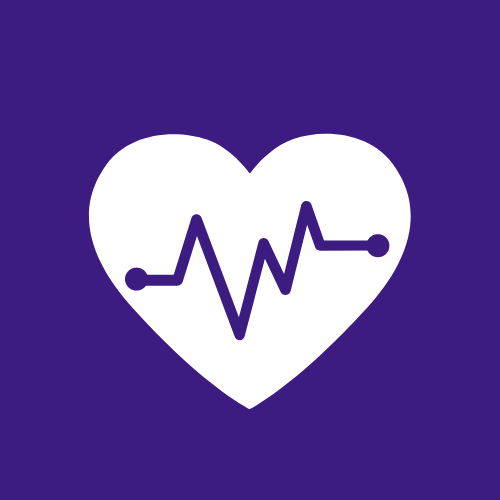
Mental Health
We have some of the highest levels of mental ill health in England, and the highest levels of depression in London. There is almost double the number of people living with serious mental health concern in the most deprived areas in Islington, compared to the most affluent areas. Despite the well-evidenced benefits of being in work on health and wellbeing, only a small percentage of people living with a serious mental health concern, and who are in contact with mental health services, are in employment

Disability
People with learning disabilities experience greater risk of poverty, unemployment and poor housing. In fact disabled jobseekers need to apply for 60% more jobs than non-disabled jobseekers. They are also more likely to feel lonely and isolated, as well as to have health problems and to experience mental health issues than people without disabilities. According to a recent survey in Islington, people living with self-identified disability are less likely to experience kindness when accessing public library, schools, colleges and universities, and early years setting.

Green space
Islington is also the most densely populated local authority in the UK and has the least green space per head of population of any local authority in the UK. Both factors have an impact on mental and physical health and wellbeing of people living in Islington.
